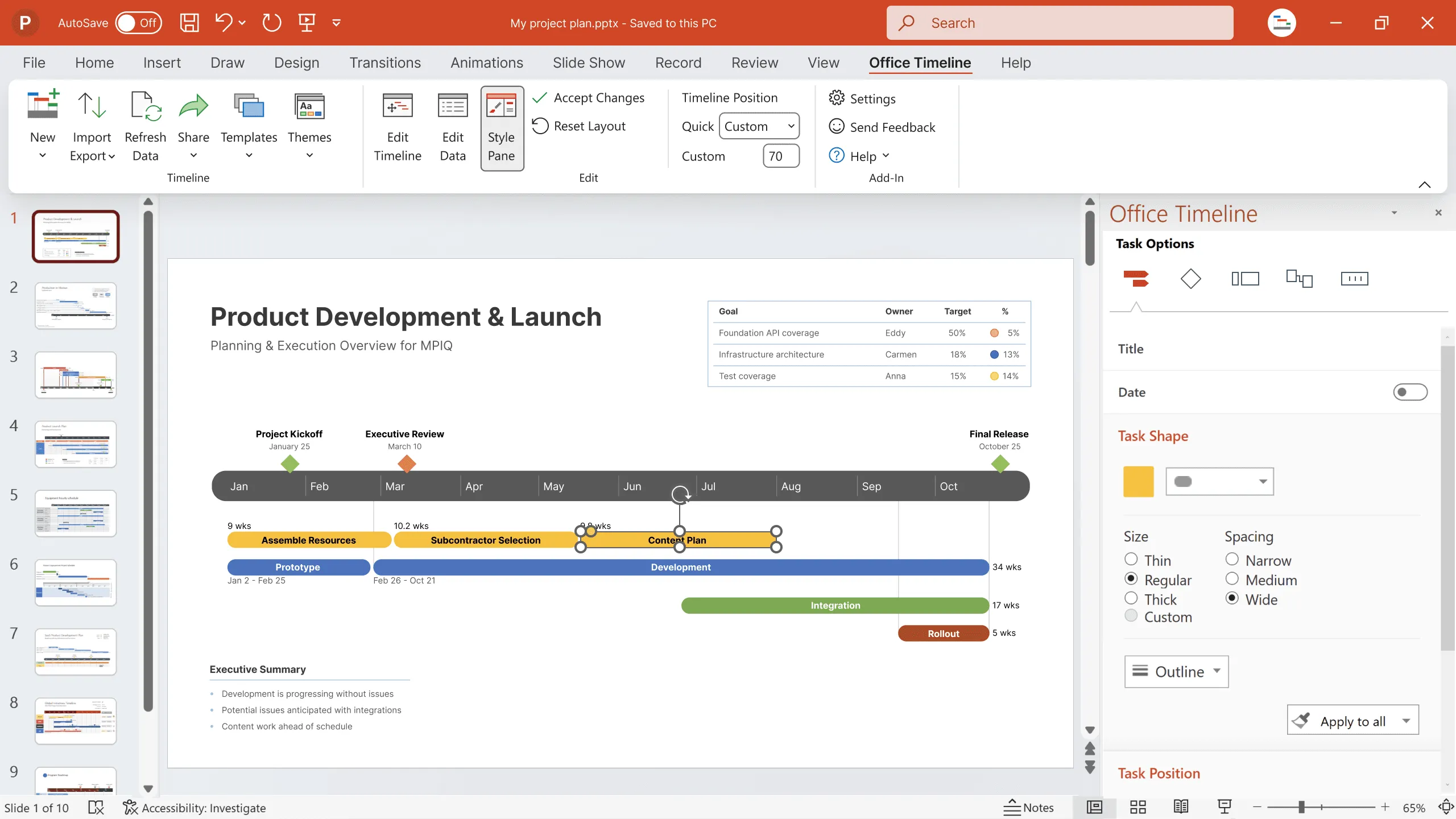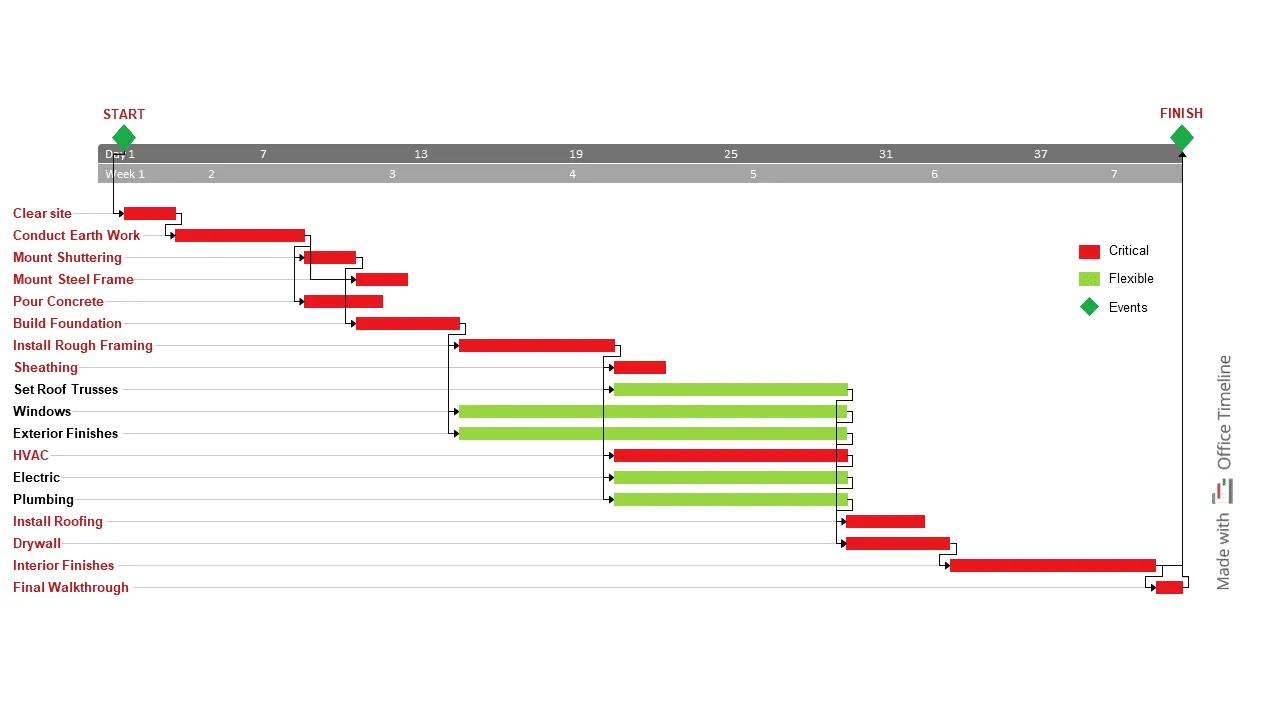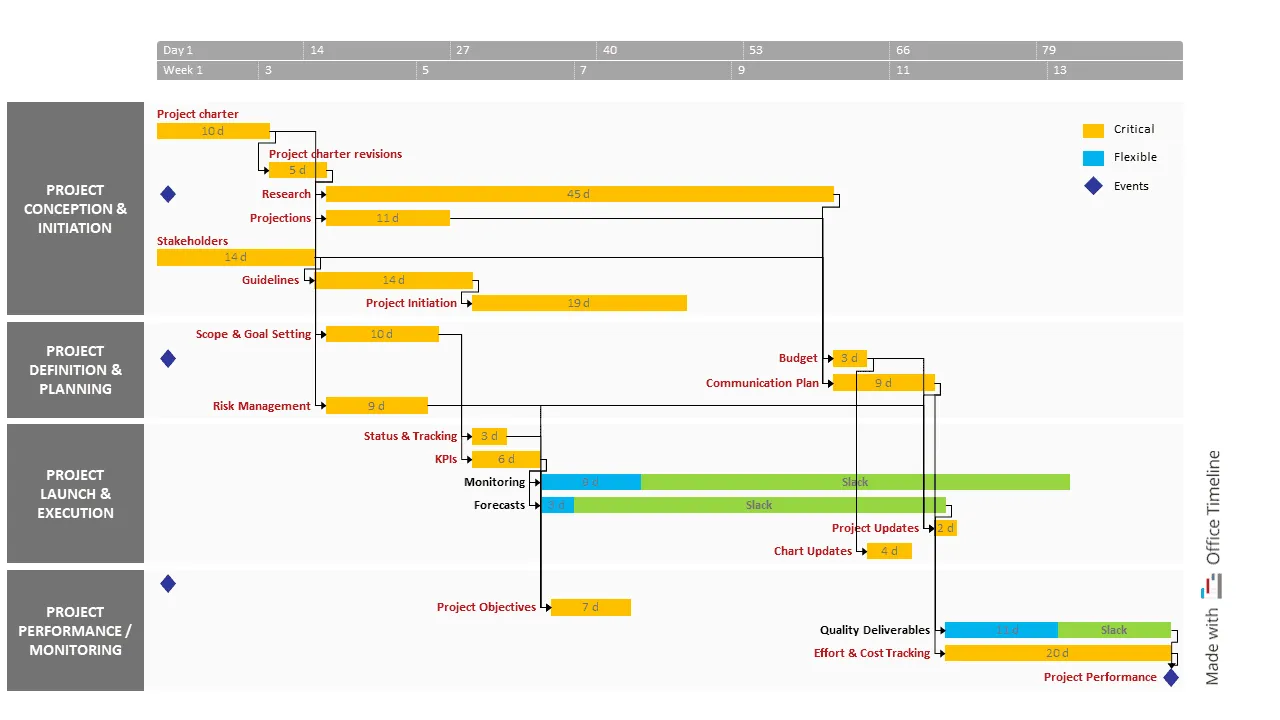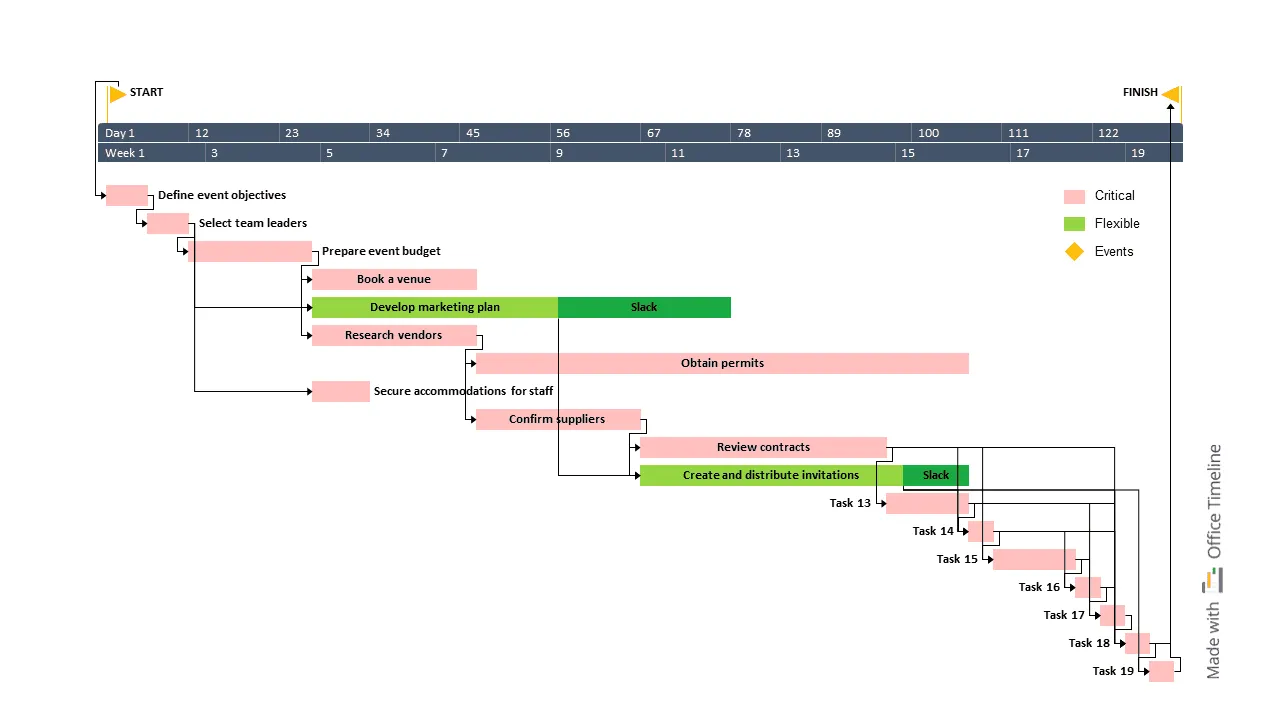Use cases for the critical path method
Learn how the critical path method can be used with our clear set of examples that apply the project management technique to various use cases.

The critical path method (CPM) is a complex project management technique that works well in a diverse range of use cases. Used to determine a project’s critical activities, CPM helps project managers efficiently schedule their work timeline in order to meet deadlines with minimum costs. CPM has a varied list of applications:
- Planning and releasing a new product;
- Installing and debugging an IT system;
- Manufacturing and assembling job-lot machines;
- Constructing a building or highway;
- Research and engineering design projects;
- Scheduling ship construction and repairs.
But why is critical path analysis a good fit for such examples? Our blog post will cover the answer to this question and also provide a set of clear, actionable examples that you can start from to analyze and schedule your project plans.
You can download the sample templates as PowerPoint files for free and customize them either manually or automatically, with the Office Timeline add-in.
For what type of projects is the critical path method suitable?
The critical path method proves to be an efficient approach for managing projects that share the following essential characteristics:
- They are repeatable in nature and rely on a well-known activity time period.
- They consist of a well-defined series of tasks (activities) which, once completed, indicate the end of the initiative.
- The project’s ancillary tasks may be started or stopped independently of one another. This prerequisite reduces the restrictions of a continuous-flow process, where operations have to occur in a successive order without any slack.
- The project’s essential tasks are arranged in clear, logical sequences. For instance, in the construction of a house, the foundation must be laid before the walls are erected.
How was the critical path method first used?
Developed in the late 1950s, the critical path method was first used by the American company DuPont to reduce the downtime for maintenance at its Louisville plant, which produced an intermediate product in the neoprene process. CPM allowed DuPont engineers to analyze the maintenance schedule and cut downtime for maintenance from 125 to 93 hours.
The project management technique also highlighted other possible refinements that further reduced total time to 78 hours. As a result, the intermediate was no longer a bottleneck in the overall neoprene production process, and the performance of the plant increased by approximately one million pounds in 1959.
How do you use the critical path method in project management?
There are six key steps to successfully applying the critical path method in project management:
- Identify each task in your project.
- Organize all your tasks in sequences and define dependencies between them.
- Create a network diagram, also known as a critical path analysis chart, to illustrate the activities and dependencies mapped out at the two previous steps.
- Estimate the duration of each task (the time necessary to complete each activity).
- Determine your project’s critical path by looking at the longest activity sequence needed to complete the initiative.
- Create work schedule and show progress by updating the critical path diagram.
Practice the steps above with concrete examples using our guide on how to identify a project’s critical path. To speed up the process, you can choose to use one of the best critical path analysis software we’ve reviewed for you.
Applied examples of the critical path method
To help you understand how various types of projects can lend themselves to analysis by CPM, we have prepared three critical path diagram use scenarios:
1. Critical Path Construction Template
This PowerPoint critical path template for construction projects visually represents the minimum amount of time required to complete the given initiative.
By highlighting the critical tasks in red, the chart clearly indicates the critical path to follow and which activities cannot be delayed without negatively impacting the project.
2. Project Management Critical Path Template
The project management critical path template for PowerPoint provides a visual representation of a project’s work breakdown structure, with project stages and tasks, importance for each activity, and timeline bar.
By showing the critical tasks in red and the durations for each of them based on their start and end dates, the chart helps you create a clear schedule of the work to be done and efficiently manage your project plan.
3. Event Management Critical Path Template
Use this PowerPoint template to identify the critical path for your event planning activities and to make sure you complete work on time.
Reflecting the steps in an event management process along with task predecessors, the chart shows you which activities cannot be delayed and which ones are flexible.
Edit the template to add your time-bound parameters and set how much slack time you can allow for your tasks without exceeding your event deadline.
FAQs about using the critical path method in project management
Let’s find out the answers to some of the most frequently asked questions about the critical path method.
The critical path method can be used to manage a variety of projects, ranging from construction and manufacturing to software development and event planning. However, any project with dependencies can benefit from this project management technique, especially when multiple project tasks occur simultaneously and it is hard to visualize how their deadlines can impact your project’s duration and chance of completion.

In some cases, yes. The critical path method can be your go-to approach if the following statements are factual about your project:
- It relies on many interdependent tasks – if the evolution of one task depends on another one’s output, then CPM can help you manage these interrelations and keep your schedule on track.
- Project tasks have tight deadlines – since it focuses on identifying and managing your project’s critical path (the sequence of activities that must be finished on time for the project to be completed at the target date), CPM can help you prioritize tasks, allocate resources accordingly, and quickly detect and address potential disruptions.
The critical path method (CPM) and Project Evaluation and Review Technique (PERT) were both developed in the 1950s. Both of them analyze a project’s list of required tasks, estimated duration for each task, and task dependencies.
However, the main difference between the two resides in their level of certainty around activity durations, because PERT is used to estimate the time required to complete activities, whereas CPM is used when the activity durations are already estimated. In other words, PERT is generally used to manage uncertain project activities, whereas CPM manages predictable project activities. PERT also focuses on meeting or reducing a project’s duration, while CPM focuses on time-cost trade-offs.
Project management tips and tricks
Tagged With:
Critical pathTurn project data into professional timelines
Get the advanced features of Office Timeline free for 14 days.





